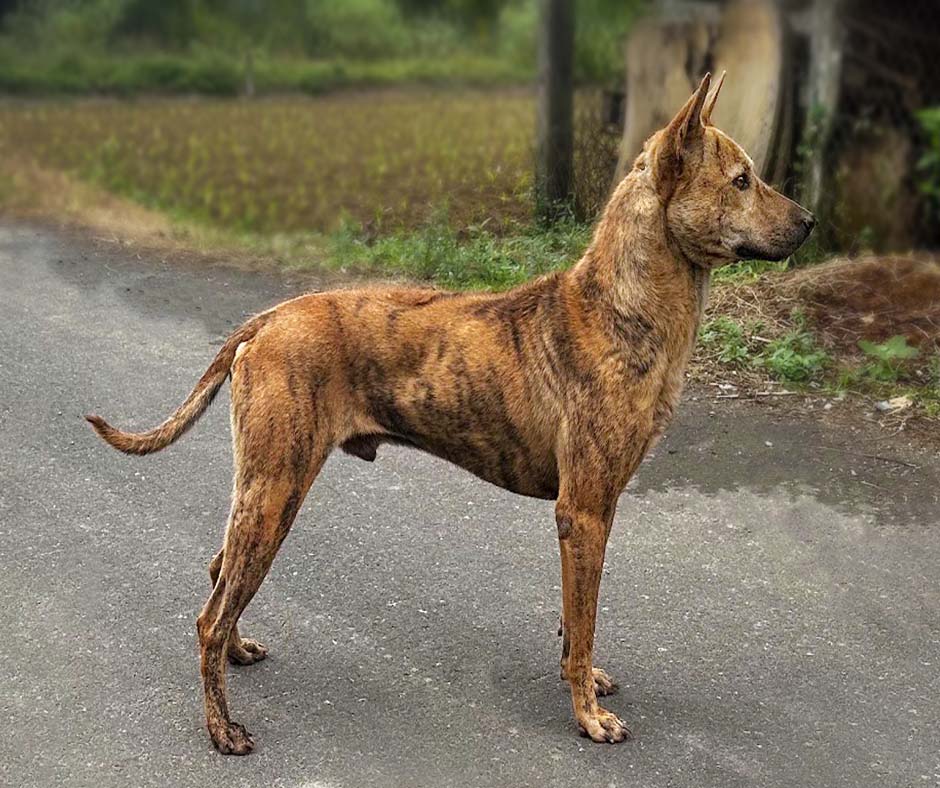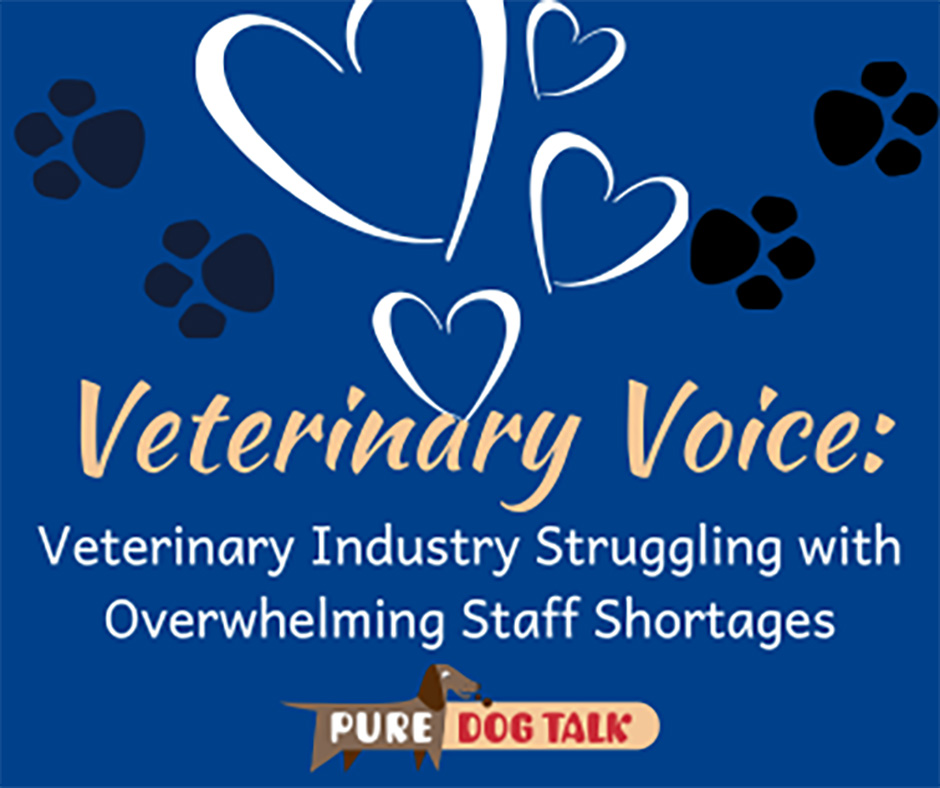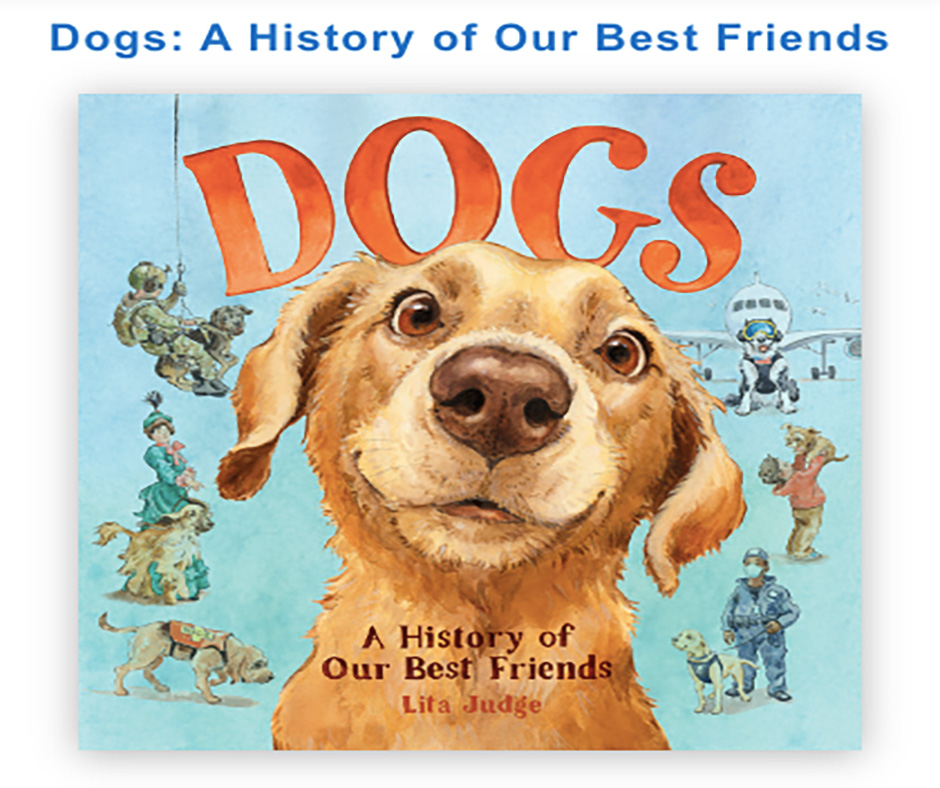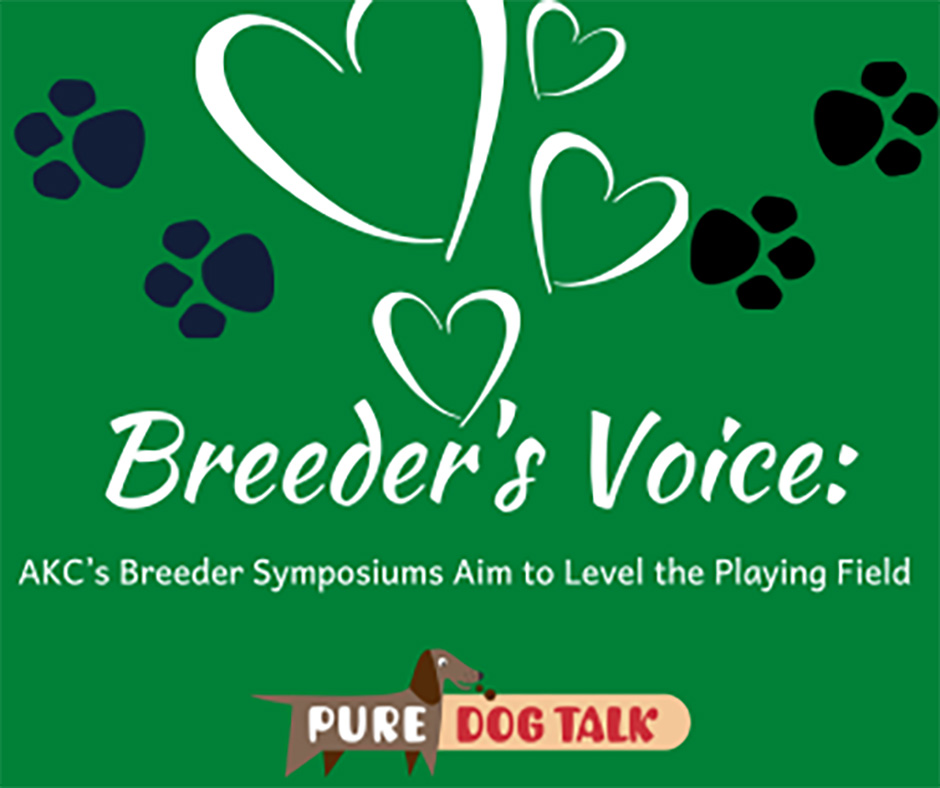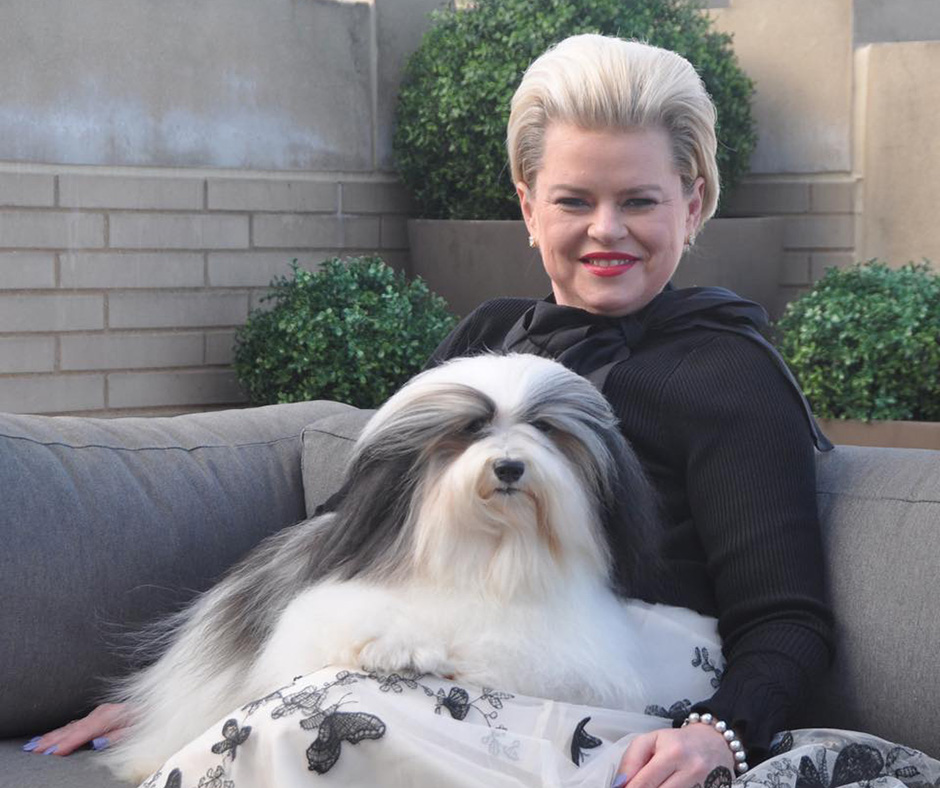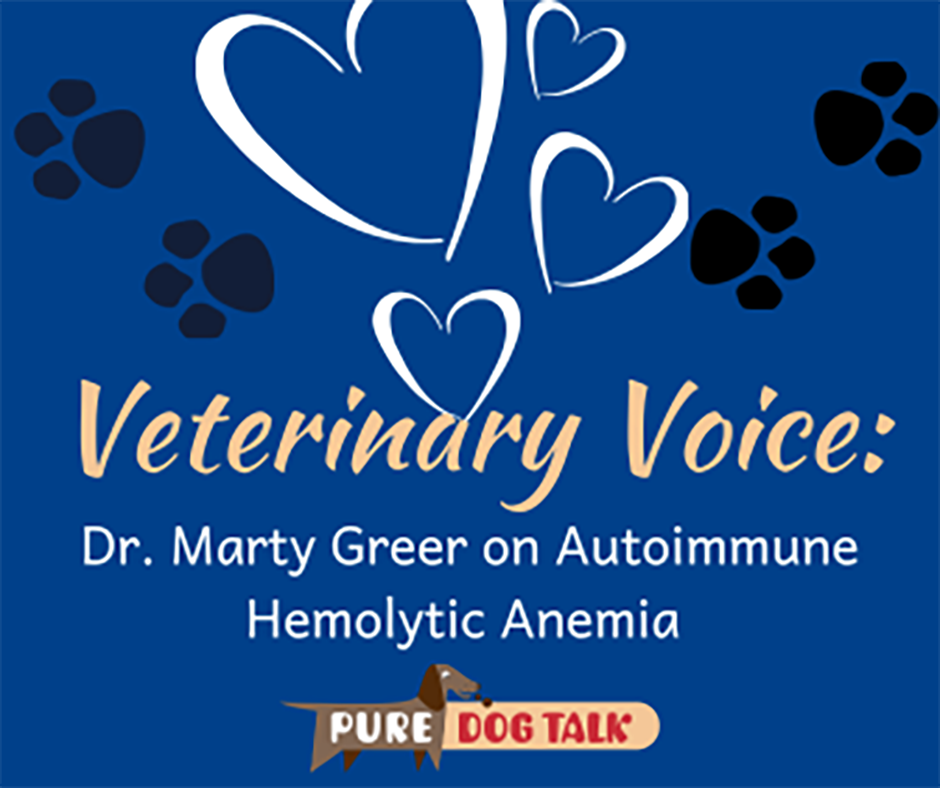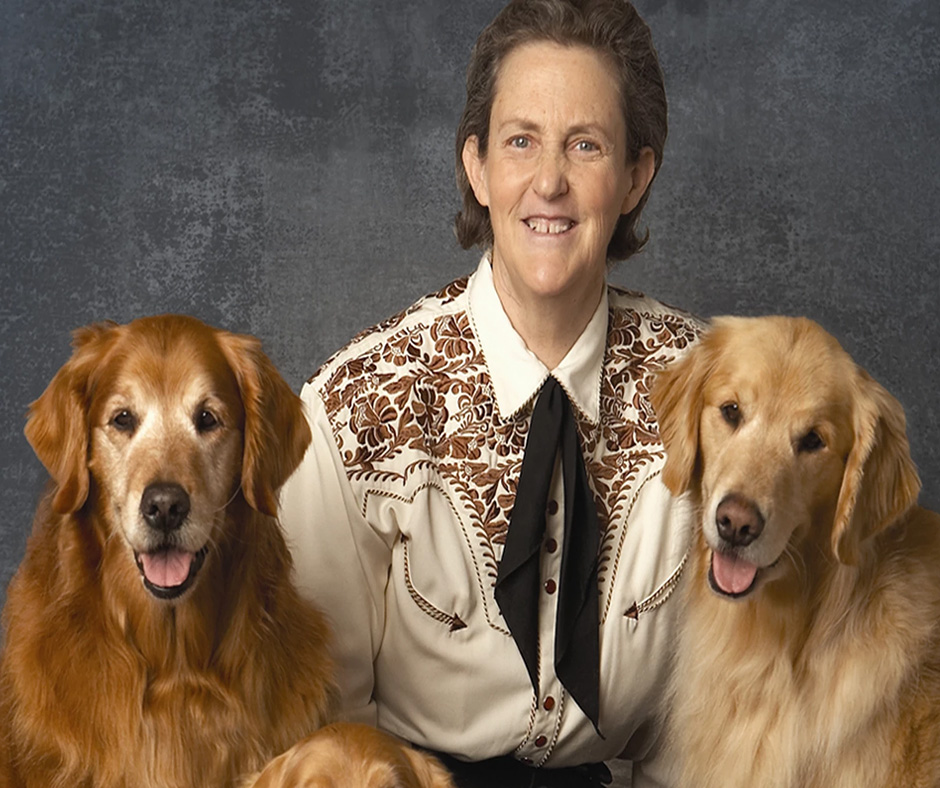Posts by Laura Reeves
587 — Phu Quoc Ridgebacks: From Vietnam to America
Host Laura Reeves is joined by Kira Hoang and Dan Khanh Tran to discuss Phu Quoc Ridgebacks and their efforts to build a club and registry for the indigenous breed of Vietnam.

Phu Quoc Ridgebacks are one of three known breeds with “ridges” of hair on their backs. Photo Red River Kennel.
Developed on an island off the coast of Vietnam, the Phu Quoc Ridgebacks join the Thai Ridgeback and the Rhodesian Ridgeback as the only known “ridged” dog breeds.
Tran notes that most of the breed’s known history is from French explorers who brought them to Europe.
Native people on Phu Quoc island have a myth about the breed, that the dogs were born from stone dogs that guard the local temples. They are still utilized on the island as home guardians and independent hunting dogs.
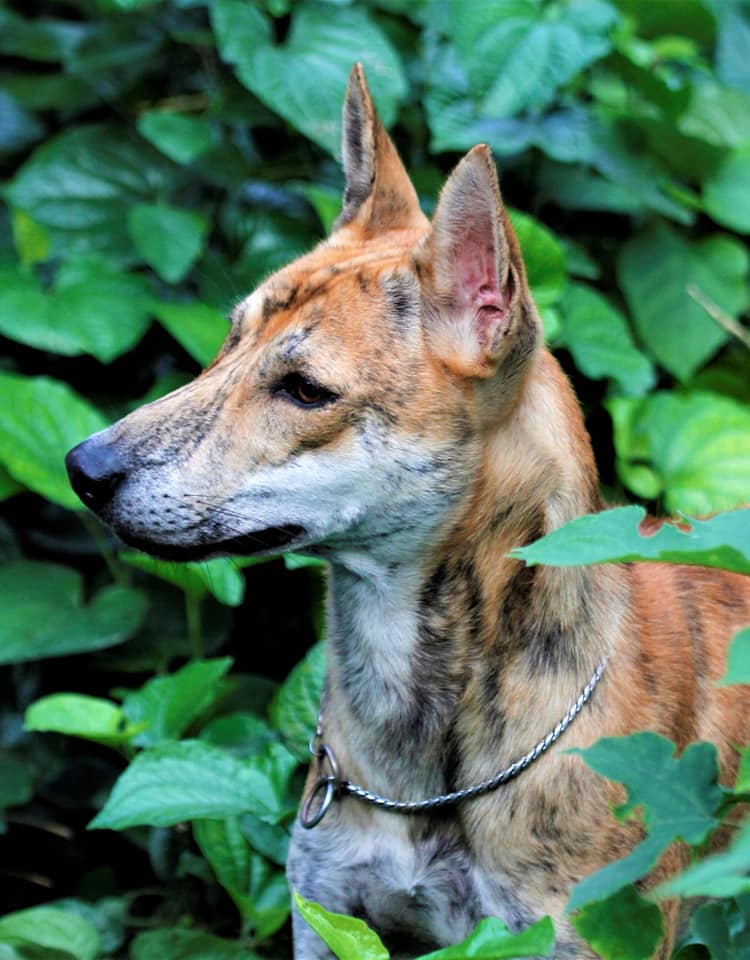
The breed is medium sized, short coated and comes in a variety of colors. Photo Red River Kennel.
“Their hunting is different from modern dogs hunting,” Hoang said, “because they’re independent thinkers, so they don’t need their hunter to actually go with them to hunt. I’ve actually watched videos of them where they’re chasing this pig …you’ve got three that are chasing this pig and then you’ve got two that have now split off to go and chase it and (corner) it on the other side. They’re thinking and communicating with themselves to go and do these roles. They’ll assign themselves roles, which is what I was told by a lot of the breeders when they do go hunt with them … that the dogs will go and do their own roles and they’ll distinguish them amongst themselves. The hunter never has to tell them what to do.
“I think a good description is just like easy going, that’s kind of like the breed characteristic is that they’re easygoing island dogs. They’ll go hunting with you all day or they’ll stay at home with you all day kind of thing. There’s so much versatility to the dogs that the people of Vietnam really, really like.”
Hoang traveled to Vietnam earlier this year and collected DNA samples from more than 100 dogs, mostly PQR but also other indigenous Vietnamese breeds, to add to the databases at Wisdom Panel and Embark.
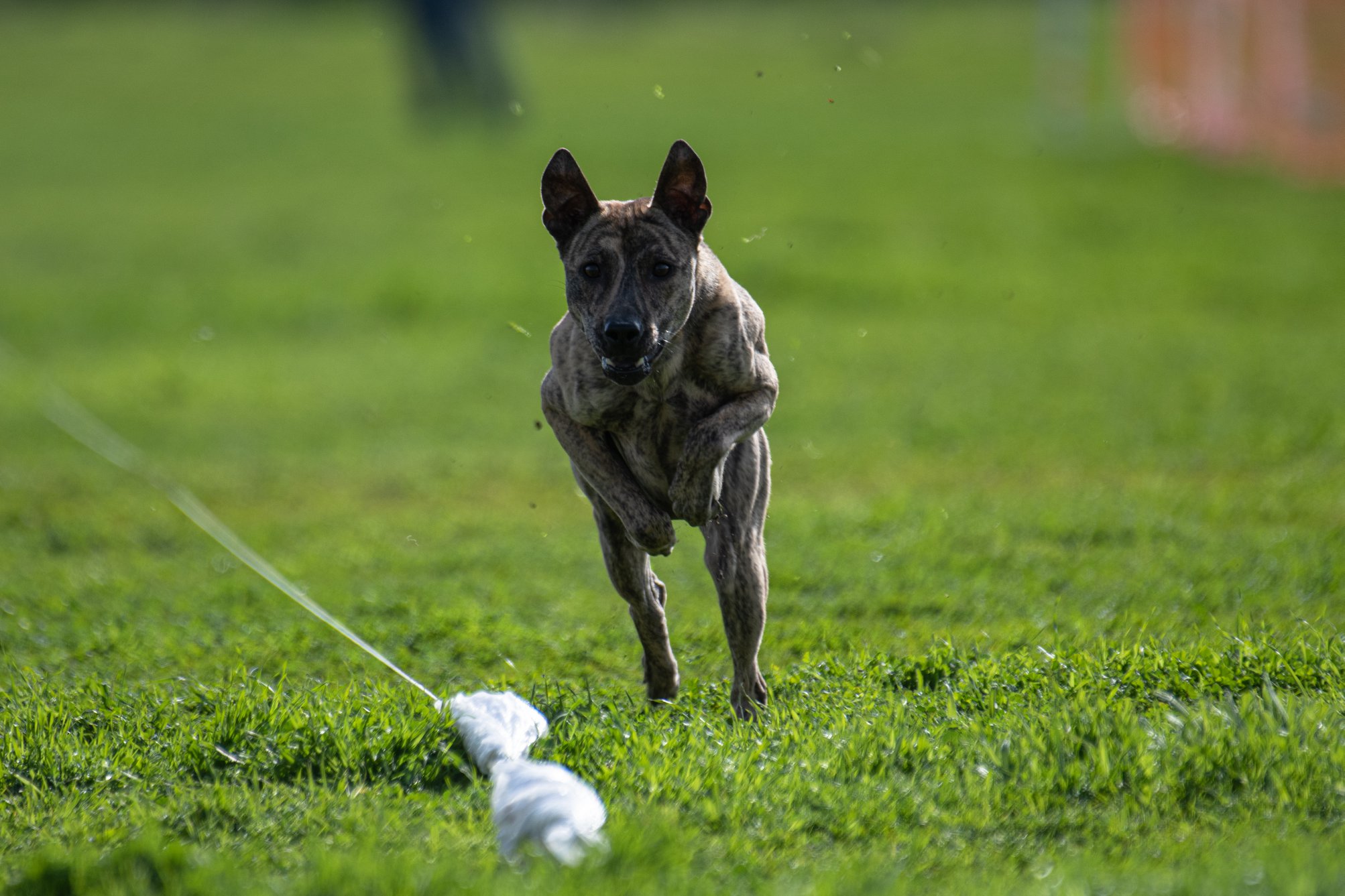
PQRA is encouraging clubs and owners to allow the breed to participate and title in various sports. Kaladin is owned by Professor Alex Gilewski.
“We’re trying to establish this breed here,” Hoang said. “Not just established it, but we’re trying to preserve what it is in Vietnam and preserve those same traits here. They’re very rare, obviously. So, it’s easy to novelize something that’s rare, something that’s new, something that’s expensive. We don’t want that. We want our breed to be loved as it is over there. We want it to be as available and accessible, but we want it to stay true to the breed that is in Vietnam.”
“We also want to make sure we’re doing it right,” Tran said. “You know that our breed that is so important to us is not just having its history recorded, but it’s also that we’re breeding for better. You know that we’re doing the health testing, that we’re making sure that breeders in Vietnam and breeders here have access to information that will help them breed better.

Hoang with her Phu Quoc Ridgebacks.
“And that’s actually one of the things that Kira did in Vietnam was as she was talking to the breeders, she’s helping give them information, like here are some of the practices that we have that can help improve your program, things that they didn’t know before.”
Learn more about this fascinating breed at https://www.pqrassociation.org/
Cover photo is Chapi courtesy of Phi Anh Kennel.
586 – Laura’s Puppy Whelping Tips and ‘Must Have’ Supply List
Laura’s Puppy Whelping Tips and ‘Must Have’ Supply List
Host Laura Reeves walks listeners through the “Ya Ya Sisterhood of the Traveling Pants Collection of Whelping Supplies” in this excerpt from Pure Dog Talk’s LIVE@5 live podcast.
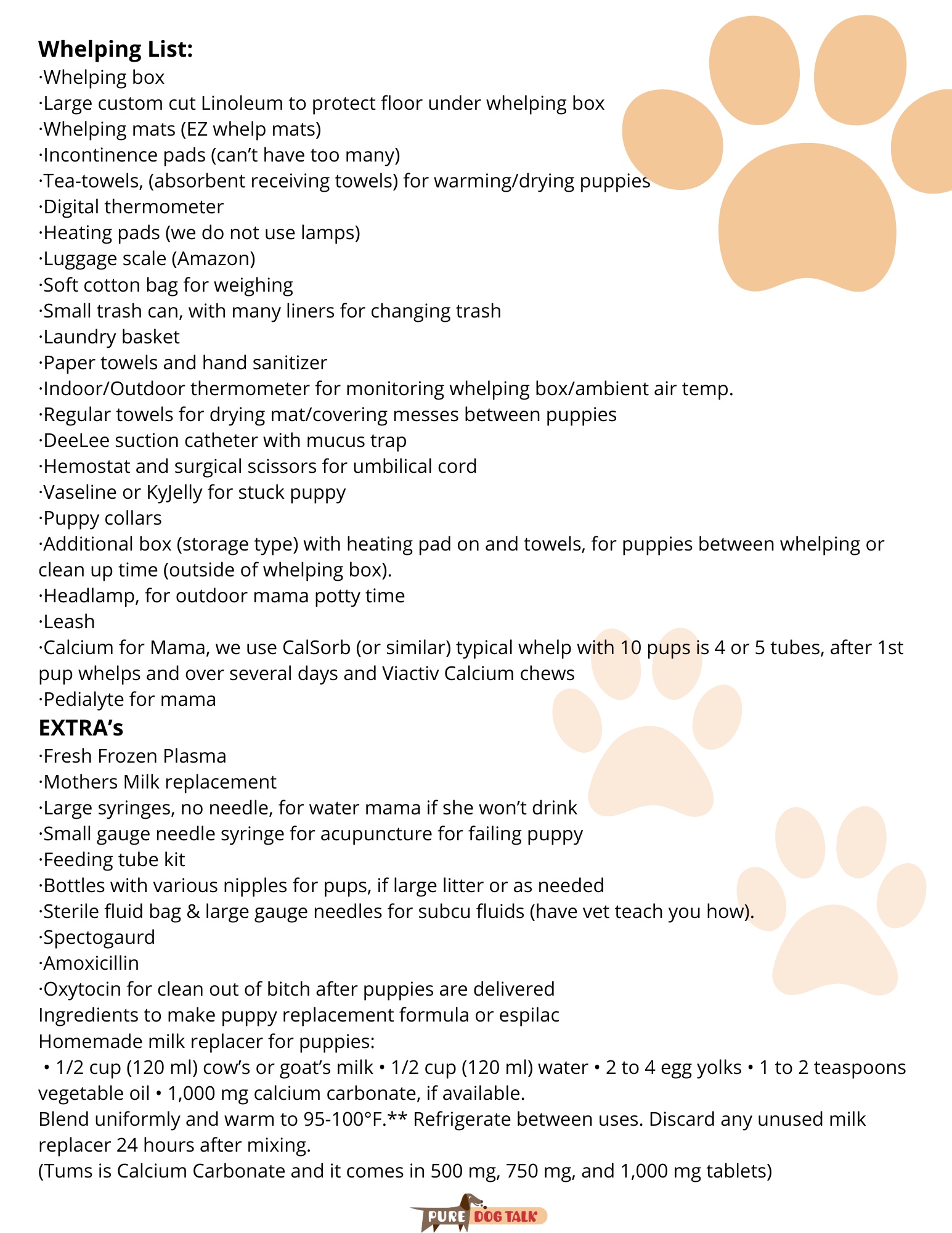
Pure Dog Talk’s Whelping List, AKA What’s In Our Box, AKA “The Ya Ya Sisterhood of Traveling Pants Whelping Supplies”
Laura lays out the “whys and wherefores” of what everyone should have on hand before the big day arrives. From the size and construction of your whelping box to the traction required in the whelping pads and the heat source to keep puppies warm, she lays out her personal experience acquired over decades and additionally informed by the knowledge acquired during the last six years of Pure Dog Talk interviews.
“Your whelping box needs to have sufficient room for your bitch to be able to be away from the heat source, but still close enough for the puppies to get to her,” Laura noted. “It is going to depend (on) how large is your female, how large is your litter? That will determine how large your box is.
“For the first couple weeks, everybody’s going to be in the box and in some breeds it’s going to be a lot longer than that. But you need to also then prepare to have a system whereby the mom can leave the box, leave the puppies. And go back and forth so that she can nurse them but still have some time to get away from them.
“Number one priority for your whelping box, in addition to the size, is the ability to disinfect it. I know there are people who have homemade whelping boxes using plywood and two by fours and all the rest of it. In and of itself, that’s not a horrendous thing. The only thing that I’m gonna tell you with that is that you, number one, must seal the wood. Because if you use that whelping box for multiple litters, you have contagions that you cannot disinfect from raw wood.
“If you are using a hard sided box, you must have what we call pig rails. So those are about two inches wide, and they stick out about two inches above the floor for about two inches out into the center. And it’s a place where puppies can get kind of shoved so that mom doesn’t lie down on top of them and squish them.
“Next up is our strong recommendation that wherever you are placing your whelping box should not be in a high traffic area. Particularly for the actual whelping. Bitches do not want to have their puppies with an audience of 20. They just don’t. They would like to be in a dark, cave-like environment.
“(You can) lay a sheet over the top of X pens around the whelping box. Put it in a corner. Put it in a separate room. Make sure that the room itself, the ambient temperature of the room itself, (is) about 70 degrees. The whelping box, where the actual puppies are, needs to be at least at least 90 degrees. Puppies cannot maintain their body temperature for minimum the first two weeks. They have to have a way to go to a warm spot and away from the warm spot. Mom is close enough to warm enough, but she isn’t always there.
“Puppies are like heat seeking missiles. They will find the heat or find a way from the heat. They will find the food or away from the food. That’s about the sum total of their abilities for the first ten days. Find heat, find cool, find mom, go to sleep. That’s what they do. They’re potatoes.
“We have found one thing to be super effective is find a piece of linoleum. Cheap garbage linoleum. Cut it to the dimensions of what will be your puppy area so that you can protect your floors. I used tarps for a lot of years. They’re terrible. They get torn up. They may be cheaper, but they’re not a great solution. The linoleum is an amazing solution. You keep it rolled up, you lay it out when it’s time to get your puppy whelping area ready. Lay your linoleum down. Put your whelping box on top of that. Make sure that your linoleum is large enough that it is got room for the whelping box and an additional area where the puppies will be able to go out and potty when they get older. Where they’re still in their area, but away from their sleeping area.”
Listen to the full episode or the extended LIVE on YouTube for more insights.
585 – Virginia Lyne on Merry and Expressive English Cocker Spaniel
Virginia Lyne on Merry and Expressive English Cocker Spaniel
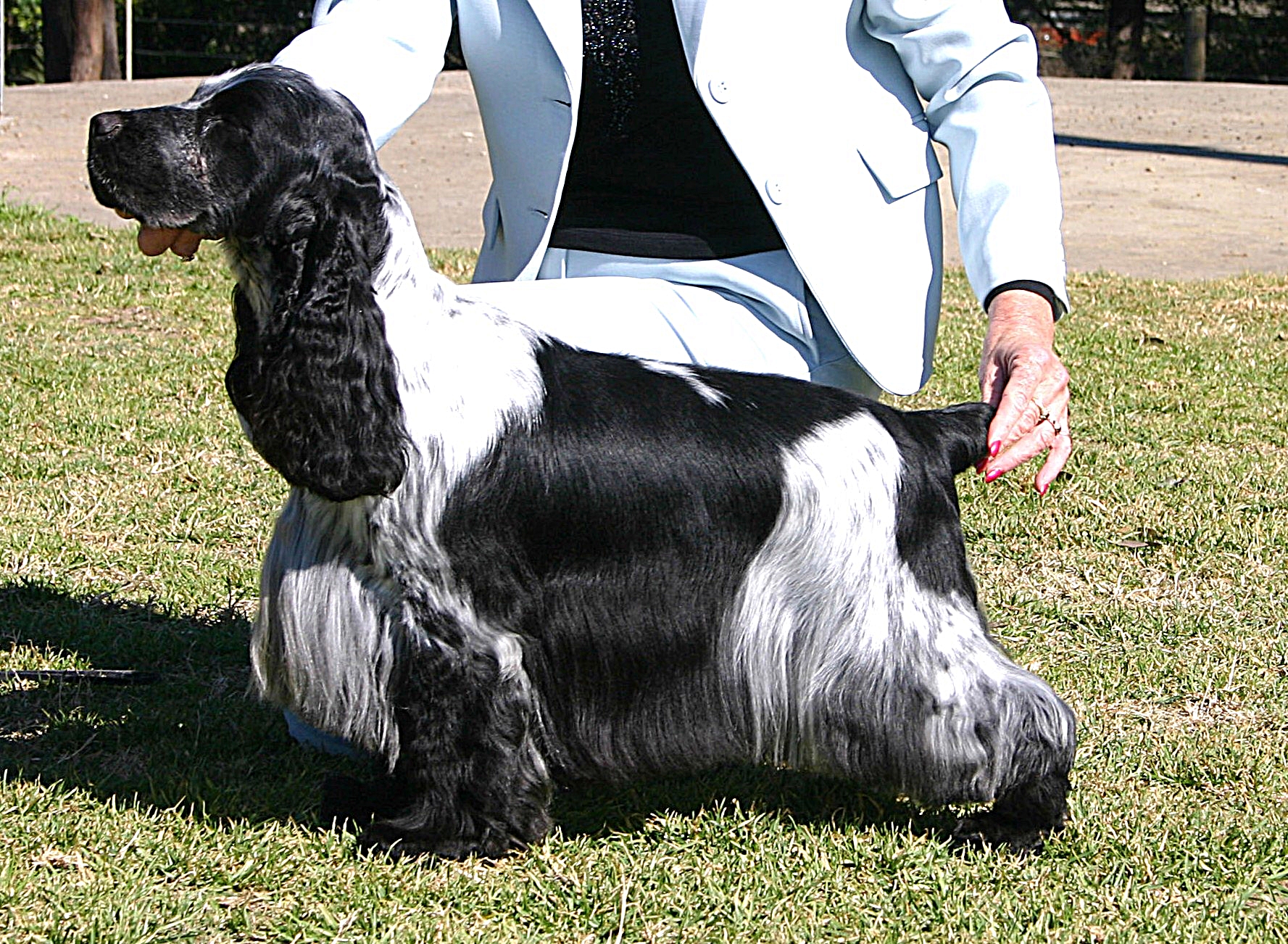
English Cocker Spaniel
Virginia Lyne joins host Laura Reeves for a Love the Breeds episode on the merry and expressive English Cocker Spaniel.
A resident of British Columbia, Lyne has been breeding the Ranzfel English Cocker Spaniels since 1960. Her passion and undying love of the breed is evident in this wide ranging and thoughtful discussion.
“You have to be prepared for a companion that’s going to follow you everywhere,” Lyne said. “(One that) likes to go to the bathroom with you. It likes to wander outside with you if you get up and go somewhere. He or she doesn’t seem to make any difference. They have to be with you. They’re not prepared to sit on the couch and say, ‘I know where you’re going, I’ll be here when you get back,’ which we have whippets as well, and that’s more their style most of the time. So, this is a Velcro dog generally, they love to go in cars, they love to ride with you. They adore going for walks. One of their pitfalls (is that they are) inclined to be very greedy. Most of them will steal with no conscience table counter if they can reach it.
“(They are) very, very easy to live with (and) most of the time relatively healthy.
The grooming maintenance for a pet home is “just average,” Lyne noted, “where you have to accept hair, definitely is manageable if you’re prepared to do your brushing and combing.”
“They love hunting when you’re walking with them. If they’re unleashed, you have to make sure that you’ve taught your comeback and come back and retrieve. They will retrieve. They love to carry balls. Generally they like to fetch. They’re not big water dogs, which is not part of their history.
“(The breeds) were originally separated (by how they hunted) …. springing spaniels and “cocking” or field spaniels. It was a height, weight and how they hunt that made the difference … the cocker was developed by hunters because they wanted an animal that could go into any one of those hedges that run across the fields. Those are thick, dense and they’re wonderful hiding places for birds, Woodcock in particular, which is where the name came from.
“Geraldine Dodge was very instrumental in her work with the breed. If you ever come across a Geraldine Dodge copy of the English Cocker book, it’s quite fascinating, with early pictures, color plates and breed standard descriptions, and so on. Anyhow, in 1946 the AKC recognized the separation of the American Cocker.”
“He will, on the slightest invitation, leave the cream cakes to follow the guns.”
Lyne shared the following excerpt to describe the breed:
“In Sport, as in ladies’ hats, fashions have changed with each decade… Though fashions may change, we find that the merry little Cocker has always maintained his place in the esteem of the public and sportsmen alike, by dint of his extreme adaptability and courage and, let us face it, also by his hardiness to withstand the rigors of our English climate. He should never have been allowed to become a pampered pet, although the vast majority are, nowadays just that. Again, blame his adaptability and lovable nature: but anyone who has ever seen these game little dogs working in the field must admit that this is their rightful heritage and the place where they are truly happy. A Cocker that has once tasted the delights of bustling in and out of the hedgerows and thickets and has had the scent of hare, pheasant, partridge, or the humble rabbit in his nostrils is lost forever to the drawing room. He will, on the slightest invitation, leave the cream cakes to follow the guns.”
Quote from “The Dual Purpose Dog” by A.W. Collins, circa 1950 (Collinwood Cockers, Kent, England)
Watch the entire discussion, including expanded comments on judging the breed, HERE.
584 – Veterinary Industry Struggling with Overwhelming Staff Shortages
Veterinary Industry Struggling with Overwhelming Staff Shortages
Dr. Marty Greer, DVM joins host Laura Reeves to review her presentation at the NAIA conference on the struggles of overwhelming staff shortages in the veterinary industry.
“It is estimated that the veterinary industry is 40,000 people short, not just veterinarians but veterinary staff,” Greer said. “It’s a lot of people. So, if you divide that up into every state, that’s a lot of people that your veterinary clinics are suffering with trying to get by without. So that’s veterinarians, that’s receptionists, that’s managers, that’s everyone.
“So again, I know we’ve talked about this before and I just really need to keep beating the drum that we need to be sure that we’re taking good care of the veterinary relationships that we have. I just got off the phone with another colleague a few minutes ago talking about practice sales and how that’s impacting the relationship people have with their veterinary clinic and how that changes everything.
Greer addresses the corporatization of veterinary clinics and how that is to the detriment of reproductive health, particularly, in our dogs.
“It does play a role in all aspects,” Greer said. “I think the reproduction part is especially difficult because a lot of the new graduates have been trained to come out of veterinary school with the impression that breeders are not good people and breeding dogs is this terrible hobby. And so, I think it’s really frustrating for people who have all the right intentions to breed healthy dogs to help these nice new graduates pay off their veterinary school loans. I don’t really understand where they think healthy dogs are going to come from.
“It’s really important that we keep the existing good relationships and that we keep our veterinarians happy. From talking to financial planners, you really are in a better financial place by keeping your practice than by selling to what looks like an attractive number because by the time you get done paying all the taxes and all the other things and then you don’t have the asset that you developed anymore. I mean we spent 42 years developing this asset. I’m not just going to hand it off to someone that doesn’t have the best interests of my clients and staff in mind. So, take good care of your local veterinarian.”
One of Greer’s top tips is how to manage whelping and when/how to use Oxytocin. Here is her chart to print out and add to your whelping kit.

Dr. Marty Greer’s Rules for using Oxytocin.
Greer continues with GREAT tips on how to be prepared ahead of time for any situation, how to work with your vet and how to survive and thrive in this challenging climate. Listen to the full episode for all of the advice from one of our best veterinarians.
583 – Book Teaches Children How to Train and Socialize a Puppy
Book Teaches Children How to Train and Socialize a Puppy

Authors Giselle Nevada and Jennie Chen join host Laura Reeves to share the story of their new book, “The Puppy Adventures of Porter and Midge – Out and About,” a book about two puppies who go on adventures, written by dog people to share with the general public.
“As dog people, these dogs are our lives,” Chen said. “Our entire lives revolve around them. So our way of communication is certainly at a different level because we’ve got the depth of knowledge that the general public doesn’t necessarily have. They might have a couple of pets throughout their lifetimes, where we’ve got dogs that we train, show, live with us, live with somebody else, and those sorts of things.
“So being able to communicate to someone who can only take a tiny snippet of what we understand in the dog world is so difficult. And then trying to translate that to a child who may not have all of the communication skills and mobility skills. How do we communicate these ideas to kids, to this different audience, so that as they grow, these are the things that are really important? What does a puppy see when they’re out in public? So yeah, we’re very passionate about this.”
The dog “characters” in the book are a Mastiff and a Greater Swiss Mountain Dog, the breeds Nevada and Chen own. The two friends met while living in Austin, TX, and developed this project from their combined passions.
“You will see a lot of people who are in the dog world also drawn in,” Chen added. “They may not be the characters, but they may be the people you know walking around on the street, the veterinarian, other people, and other dogs that you may already know from the show world. So we try to incorporate a lot of that. We also want to incorporate a lot of the breeds that aren’t as well known, like we have a Bouvier in there.
“We really wanted to speak to a different audience. Because it’s not just, ‘Oh, this is what I’m to do with an adult.’ This is what we need to do as a puppy. And now you layer on a kid, How do you get a kid to understand that? Because they don’t understand the same things we understand. They’re not able to pick up the visual cues, the body language that dogs have. How do we introduce them to this idea of socialization?”
Listen to the entire episode for more details or watch on YouTube.
582 – New Children’s Book Devoted to the History of our Best Friends
New Children’s Book Devoted to the History of our Best Friends
Host Laura Reeves is joined by world famous children’s book author and illustrator Lita Judge to discuss her newest release, “Dogs: A History of Our Best Friends.” Spoiler alert, Laura and Lita share a friendship dating back almost 40 years!
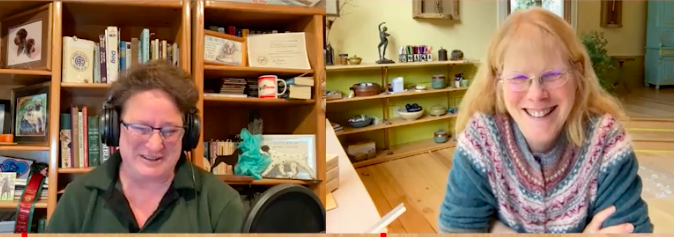
A reunion of old friends as host Laura Reeves visits with Lita Judge, author and illustrator of the newly released children’s book, “Dogs: A History of Our Best Friends”
The book is the result of the pandemic providing Judge the time and mental space to focus on a topic she’d wanted to write about for years, she said.
“I think the reason I hadn’t written it sooner was because it was just a massive amount of research. It covers 40,000 years of the history of dogs,” Judge said. “And there’s so much information about: how did we domesticate them, did they self-domesticate, you know, stacks of books to read. And I felt like I had the quiet space to just really dive into this because I knew that this project was going to be a total labor of love.
“It’s my second longest book that I’ve done. And I just wanted to do it. Well, when I was going to do it, you know, I got to research medieval times and prehistoric times and what was our relationship to dogs in 1st century China and how did dogs serve in war and what do therapy dogs do? And you know, all this vast amount of information, I knew this really needed a nice chunk of time to devote to it. So the time was right.
A life-long dog lover raised by two Chesapeake Bay Retrievers and an Alaskan Malamute, Judge said “the thing I was the most curious about was how did we get from wolf to dog. And that was just so mind blowing. Like, how does that transition happen? And it was so interesting because I had to talk to different scientists and you know, I used to be a geologist and I worked on dinosaur digs. So I knew everybody has an opinion on these questions. The consensus seems to be more and more they self-domesticated and that they have the social skills because they work as pack animals and they understand working together that they were able to make that leap in working with us.
“So I think that was the thing I was really fascinated by. The other thing I was blown away with is that dogs were prescribed as treatment as early as the Middle Ages. If you had a stomach-ache, hold a dog. We didn’t understand why (then). Now we know it lowers your cortisone, lowers your blood pressure, releases oxytocin. I mean, we know why now, but we didn’t understand that why then. And yet we knew it worked. You know, we knew that that relationship with our dogs was that incredible that it’s actually healing, and luckily healing for the dog as well.”
Listen in to the full episode or watch the interview on our YouTube channel for more insight and special takeaways that apply to the dog world from Lita’s journey from shy, withdrawn teenager to world traveler, doing book tours and speaking engagements for thousands and even how she met her husband on a cross-country bicycle trip.
581 – AKC’s Breeder Symposiums Aim to Level the Playing Field
AKC’s Breeder Symposiums Aim to Level the Playing Field
Host Laura Reeves is joined by Vanessa Skou, AKC’s Executive Director of Breeder Development and Erin Myers, project analyst for AKC’s Internal Consulting Group discussing the advent and development of the Breeder Symposium events.
Skou and Myers are both third generation dog breeders and former professional handlers. They describe themselves as still very much “in the trenches” of the fundamentals of breeding dogs.
“I know I have two litters on the ground,” Skou said. “And so we have personal experiences that we were like, ‘oh, wouldn’t it be great to have a class on this.’ Because those are the questions I have as well. So, if I’m having them, I’m sure somebody else is having them and that’s kind of where we bring our personal experiences into the play.”
“We want to be able to offer beginner and advanced tracks for people.” Myers said. “So if you’ve never bred a litter, you’re absolutely welcome to come. If you’ve bred 100 liters, we’re gonna have stuff for you.
“Education is that one thing, that kind of it puts us all on the same playing field,” Skou added. “We all can learn. Education is kind of that common denominator that we have. That we can all gain the insight from.”
“Without breeders, AKC doesn’t exist,” Skou observed. “AKC sports don’t exist and so encouragement of new breeders to even dip their toe in the water or those breeders that are having a hard time and getting downtrodden and feel like they’re fighting against the tide? Like anything we can do to encourage all of them.
“Because at the end of the day those puppy buyers are what really is what matters, right? They’re the ones that love that dog for its lifetime and make our hearts feel warm and fuzzy. We get to have our dogs to, you know, play with and show or performance, whatever it may be. But at the end of the day, we make so many people happy with that puppy. And so if we can do a such a good job to make everybody have a good experience to me, that’s that’s my job. And that’s why I take seriously.”
Sign up HERE for the Houston Breedeer Symposium in July!!
Visit YouTube for the video version of this interview HERE!
580 – Tara Martin Rowell on Drop Coats and Competitive Spirit
Tara Martin Rowell on Drop Coats and Competitive Spirit
Tara Martin Rowell, breeder, handler and second generation dog woman, joins host Laura Reeves with recommendations on maintaining drop coats, the genetics of her competitive spirit and pro tips for succeeding at the highest level in the sport.
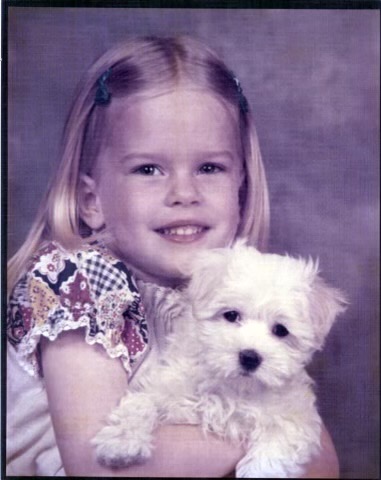
Tara Martin Rowell in her formative years with Maltese.
“Basically, I was born into Maltese,” Tara said. “My mom (AKC judge Vicki Abbott) and dad had me right after my mom had kind of gotten involved in the breed. In my younger life, it was all about the Maltese and my mom was very successful. (She) had the top winning toy dog of all time, a Maltese that she actually handled. That’s how I got introduced into dog shows as a young child.
“Something that I always say when people ask me, I think it’s very important, especially today for our younger generation, to at least get some sort of a business degree. You want to handle dogs, you got to know how to do the business side of it too, because it’s not just the glamour and the walking in the ring and the winning. I mean, that’s very small portion of it.
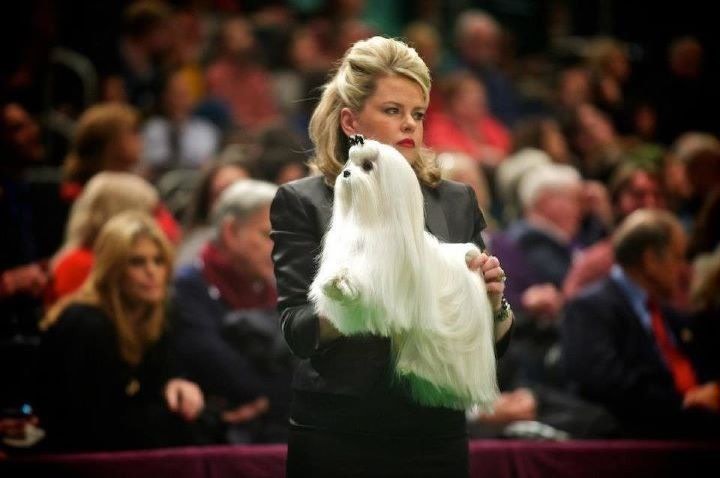
Tara Martin Rowell with Hank, GCH CH Scylla Small Kraft Re-Lit. Bred by Tara and her mom, Vicki Abbot. Owned by Ron Scott and Debbie Scott.
“I started my life picking up a lot of poop. A lot of dogs that I never walked in the ring with doing a lot of holding of dogs, doing a lot of keeping my mouth shut. I mean, there’s a lot of work that goes into that process of success, you know?
Favorite Dog Book
“I think Dog Steps would be the one everybody has to read. I think that you should reread it as you get older, especially if you’re aspiring to judge, even if you’ve been judging. I still think structure and anatomy is so important in a breeding program. In a breed like my main breed Maltese, I think people get away from the structure and the anatomy because they think the hair is so important. Hair’s very important, but it’s one piece of the puzzle that makes the whole puzzle work, and you can’t have one without the other.
Listen to the full episode for Tara’s recommendations on grooming routines, favorite products and secrets for success.
579 – Dr. Marty Greer on Autoimmune Hemolytic Anemia
Dr. Marty Greer on Autoimmune Hemolytic Anemia
Dr. Marty Greer, DVM, this year’s Westminster Kennel Club and Trupanion Vet of the Year, joins host Laura Reeves to discuss Autoimmune Hemolytic Anemia in dogs.
“Autoimmune hemolytic anemia is, as it sounds, an immune mediated disease,” Greer said. “But what it doesn’t exactly describe is that in this particular disease, the target cells for the immune response are the circulating red blood cells. So in a patient that has autoimmune hemolytic anemia… people have it, dogs have it. Not as often in cats…. basically the body attacks its own red blood cells.
“The dog goes from being pretty clinically normal, to being really profoundly sick, weak, out of breath, really, really sick. Sometimes with a fever, sometimes not, within a matter of hours to days. And when this happens, it requires an immediate diagnosis and immediate initiation of treatment. Sometimes requiring blood transfusions, 24 hour stays in the hospital, all kinds of stuff. So, it is a bad disease.
“As soon as you flip the lip and you see that really pale mucus membrane color, like their gums are white or close to white. Sometimes jaundiced, just depends on how rapidly the red blood cells are being broken down and how those are being managed. The dog will look something like a dog with a splenic rupture. Or hemangiosarcoma of the spleen where they’re bleeding into the abdomen. It’s that same really profound anemia. Now, this tends to be most common, like I said, in middle age, to older female dogs, especially spaniels.
“That being said. I’ve seen it probably in every breed. So, I don’t think you can say, well you know, I have a corgi so it couldn’t be that. I don’t really think that’s the case.
“The other part of this is to try and determine if there’s an underlying cause. It can happen spontaneously in the middle-aged and older female. It can happen after a number of vaccinations are administered at the same time, but we see a lot of it related to tick borne diseases.
“(These) are thought to be triggers for this because something makes your body, say that red blood cell that’s in your circulation, no, that’s not my cell, that’s not my protein. My immune system is going to attack it just like it would have bacteria, a virus or other foreign tissue.”
Listen in to the entire episode for Dr. Greer’s diagnostic and treatment recommendations. And click over to the Veterinary Voice ALBUM for a compilation of every one of Laura’s in depth and practical conversations with Dr. Greer.
578 — Temple Grandin to Headline NAIA Conference in Portland
Temple Grandin to headline NAIA Conference in Portland
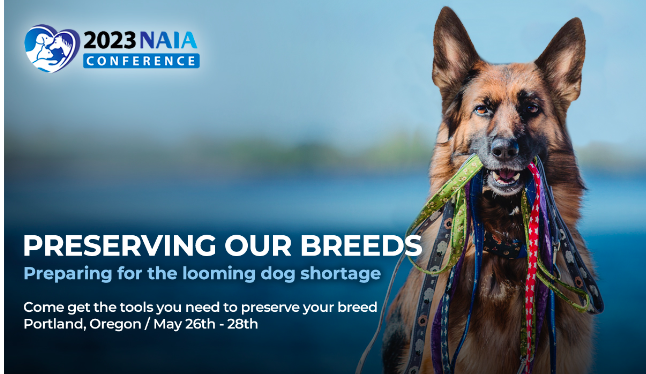 Patti Strand, founder of the National Animal Interest Alliance (NAIA) joins host Laura Reeves to discuss the lineup of speakers at the conference scheduled for May 26-28 in Portland, OR.
Patti Strand, founder of the National Animal Interest Alliance (NAIA) joins host Laura Reeves to discuss the lineup of speakers at the conference scheduled for May 26-28 in Portland, OR.
The annual NAIA conference kicks off under the banner “Preserving Our Breeds: Preparing for the looming dog shortage.” Strand shared her excitement about the keynote speaker, Temple Grandin, who has been actively involved in animal welfare for decades.
Strand said that Grandin’s most recent book “really speaks to me. It’s called ‘Visual Thinking, the hidden gifts of people who think in pictures, patterns and abstractions.’ And if you get into this book, she talks about different categories of work that people get into who have these gifts, and animal people are among them.”
Additional topics are focused on preserving our breeds, breeding healthy dogs and raising well-socialized puppies. Dr. Marty Greer, Carmen Battaglia and Dr. Claire Wiley will join the star-studded speakers panel.
“I could say the looming purebred dog shortage or the looming shortage of dogs that are deliberately bred rather than random bred or bred in countries that don’t have the same standards that we have,” Strand noted. “There always will be dogs available as long as there are street dogs in developing countries. We’re going to focus more on the deliberately bred dogs and talk about how we preserve them.
“The big part of the conference is dedicated to helping people breed better dogs, raise their dogs better. You know, the socialization pieces are all about that. The DNA piece, Marty coming in and talking about different aspects of reproduction.
“But again, in order to preserve their breed, a big part of that is breeding dogs. There are so many breeds today where you have a hundred or less dogs in the entire country. Not just 100 dogs that are intact, but just a hundred dogs of that particular breed. We need to encourage people to breed in a way that supports every aspect of animal welfare and so on, but breed dogs. It’s part of this preservation piece, you can’t preserve from if you don’t breed them.”
Remember to check out the NEW PDT Albums today!!

